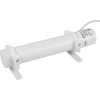mickthetree
Established Member
I have just acquired some plywood drawers which will be prefect for storing some of my planes and other hand tools. Having had some rust on tools in the workshop previously I'm keen to prevent it happening again.
Should I line the drawer bottoms with something or should they be ok straight on the ply?? I have some spare non-slip matting, some old cotton sheets, MDF, bits of carpet etc.
Should I line the drawer bottoms with something or should they be ok straight on the ply?? I have some spare non-slip matting, some old cotton sheets, MDF, bits of carpet etc.





































